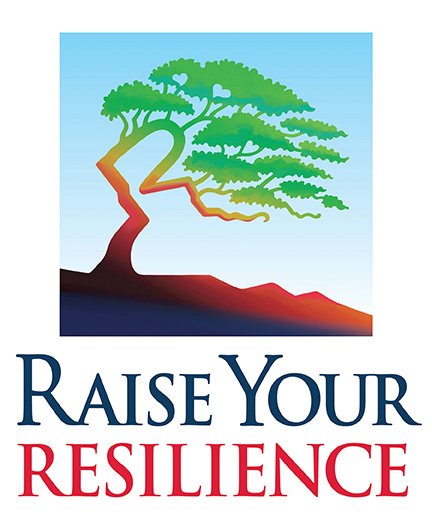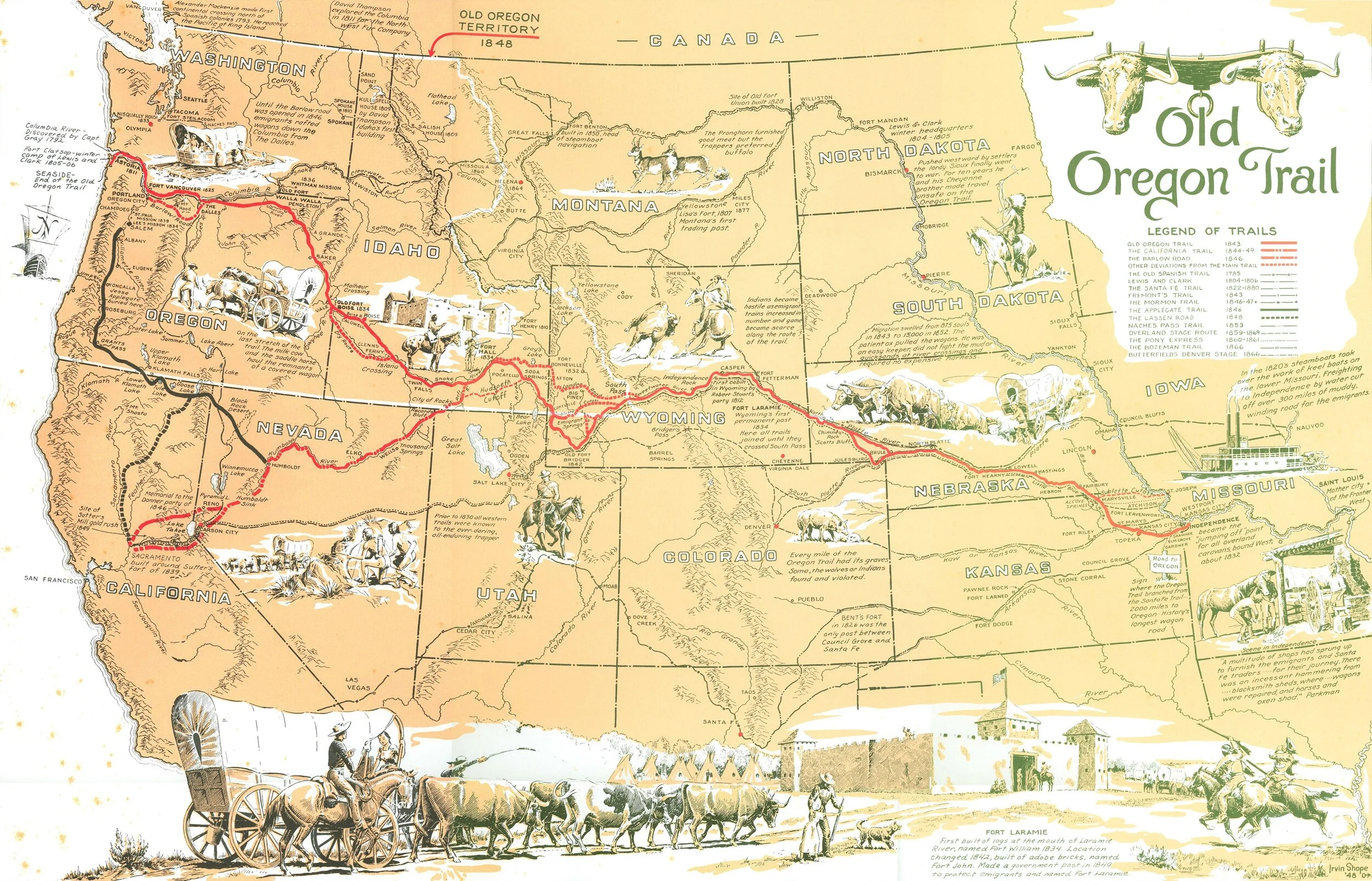Imagine that feeling, rolling down out of the Lolo Pass of the Cascade Mountains, and seeing the green Willamette Valley in front of you. This is why you loaded your wagon in Missouri and left for parts unknown in the first place. It’s why you decided to make the trip of almost 2200 miles, facing the elements, the equipment, the fellow travelers. You breathe a heavy sigh. This is now you’re home. You made it.
Wouldn’t it be great to say, “'I’m healed!” and know it’s a reality? If you’ve poked around here a bit, you might come to see that I believe such a thing is quite possible. I was convinced of that possibility by Dr. Peter Levine. Yet is also seems to me as I read the stories of others and interact with them, that the don’t know how to measure progress, or understanding what healing is. Some might say, “no symptoms.” The dead have no symptoms, is that what you mean? Facetiousness and exaggeration aside, that post is about what healing looks like, and how you can know it’s happening. Let me offer an illustration, and then I’ll get into the description.
Remember the old number lines from math classes? We all thought that 0 was the lowest you could go and one day, one hellish day, the teacher says there are negative numbers. Talk about alternative facts! OMG! Well, they draw out the number line, and so we worked with it, and learned that two negatives equal a positive, and so on. Let’s take that same number line and look at it like money. The negative side is trauma debt as it were. That’s what that life feels like, the constant strain of growing debt. Healing doesn’t mean we get out of debt and stop at zero.
Oh no.
I think for too many though, that’s what the mental image is. I was 58 years in debt, so I had no way of picturing even the zero! I may have moved from negative kajillion to - negative million, but I’m still on the debt side of the line. Not even at zero. To me that’s what a “survivor” is. That isn’t “healed.” Having a limiting perspective or vision keeps me in debt and not even moving toward, or at best, crawling toward zero. I wasn’t interested in that. Either my trauma was over, or I was gonna be.
The reality of healing from trauma is moving out of one neurological state into another. Industry leaders in trauma healing like Levine, van der Kolk, Berceli, Heller, Porges, Badenoch, Scaer, Lowen and others over the last half century which started with Selye in 1934, state that there are neurological states of 1) social engagement, 2) fight/flight (which has a lot of aliases), 3) freeze, and 4) fold (flop). There are also a few combination states, such as appeasement, play, and intimacy. What that means in real life regarding healing is in the image to the left.
At the bottom is the social engagement zone, and it has far more qualities than just the two listed there. I can enumerate six different intelligences that are innate to this area of experience and their many qualities. Likewise, fight/flight, which Porges calls mobilization, and freeze, have many other characteristics as well.
When we are traumatized, we have moved out of social engagement as a matter of living. It has become the new normal to live in a state of chronic fight/flight, which I refer to as a threat state. That is in reality what it is. You can imagine what that implies about how we then live. One has all the symptoms, again, far more than thoser listed here, all dressed up in day job attire.
The process of healing is in moving out of these states of chronic threat, back to social engagement. I was in functional freeze for many years. I was actually that wavy line on the right, moving between high fight/flight and low freeze. I had a job, a marriage that was dissolving, no close friendships, deteriorating health, not close to my own children, and dissociated quite a bit. I was also a firefighter/EMT/rescue operator! The point is, people can and do function in adaption to these states. The chronic functional state is how I, and many people live their daily lives. That was, until I had my personal Perfect Storm. Replete with all the symptoms, all dressed up in day job attire.
What we feel like at times.
So the changing of neurological states as a way of being is the actuality of what healing trauma means, and there are a lot of details in that. How then do we know if we’re healing? How do we “measure” it?
The stress bell curve image above? Let’s use that for a few moments. Imagine I’m in a state of trauma, it is complete and I’ve been here for years. The bottom segment in reality would be a little sliver, and the top one maybe a little smaller, and the middle one huge, and we can populate that area with all the of the physical, emotional, cognitive and social symptoms that accompany those states. I have a list of 37 of them and I’m sure it isn’t exhaustive. Okay, we living in a neurological ghetto. As we heal with effective tools, that line that separates social engagement from fight/flight, begins moving upward. Remember, the body has the drive to always return to balance as it were. What I call idiodynamicy. As we continue to heal, the symptoms of the arousal states begin to diminish and dissolve, and the symptoms of social engagement can emerge. One measurement then is that diminishing and dissolving of symptoms and behaviors related to states of fight/flight/freeze.. A second “measurement,” is that it takes a wee bit less to “get on my last nerve.” This is the difference between reactivity, and response-ability. That line between social engagement and the arousal states also represents our neurological,emotional,cognitive, and somatic resilience and capacity. We feel like the image of the glass of water, right? Just a little more is going to lead to a mess, because we lack capacity and resilience. In threat states, I am defensive. That’s a no-brainer, huh? How then will I behave? Reactively in many instances. I was accused many times of being defensive…because I was., and for many years I didn’t know why. As those states change, I am able to work on listening, and try and be in the other person’s shoes and thoughts and questions, and be response-able in my communication and relationships. I had an experience once where I dropped a glass. It was on a thinly carpeted kitchen floor, so I expected it to break all around my feet. And it didn’t. It bounced, and not just a little bit. I was able to bend over slightly, and caught that glass in my hand on the rebound. That ability to bounce back? THAT is literally resilience. Capacity means I empty the glass so it can be re-filled. In changing neurological states, the glass is stronger so bouncing back is easier, and capacity keeps getting larger. My somatic, emotional, cognitive and social intelligences keep expanding, as there is really nothing to limit them. The second measurement then is an increasing resilience and capacity. I can handle more.
A third way of measuring healing is the changes in our body, provided we use certain tools. If we use somatic processes, there is the ability to change myofascial constriction, vagal tone which is really a heart rhythm change, and the way we breathe at least. In my case it has dropped my blood pressure, my cholesterol is dropping, my posture is better, my weight is slowly coming down, and I am more active and flexible. And certainly not to be overlooked, is that feeling of being home in the body, and I feel that as being relaxed. I do have reasons for mentioning it though, because the issue with trauma isn’t just or primarily in our heads. It’s primarily in our bodies. It can be however, a significant way to measure real growth, which is different than change. And any good healing reconnects us with our bodies, as part of the integration process.
If we look at the header image, we see the Oregon Trail map. They could measure the progress at first, based on the city they left. First it gets smaller, then is no longer on the eastern horizon, or just beyond that ridge back there. It is way back there over several rivers and even more ridges. Then one day, we see on the western horizon something we’ve never seen before: the Rocky Mountains. Some decided to stop and not cross the mountains, and set down roots where they were in Idaho, or Colorado. Pretty places, not where they were, and they still know the way home. The goal was Oregon. The Promised Land of freedom. In healing, if we persevere through potential trials as if in a Joseph Campbell Hero’s Journey, the innate somatic, emotional, cognitive, spiritual, and environmental intelligences, can blossom into a whole new life, and we can complete the S/Hero Journey.
To sum up, healing is the changing of survival states (fight/flight/freeze) and their associated maladaptive behaviors, thoughts, and physical conditions to the “rest and digest” social engagement state of responsibility. The changing of the neurological states, the dissolving of the symptoms of arousal as well as the ways we thought, and behaved, are how we measure our healing. The end is when we put our feet up on the porch rail at the end of the day, looking at what we actually own, what our work has achieved, and we know that we’re free, and we’re home.




